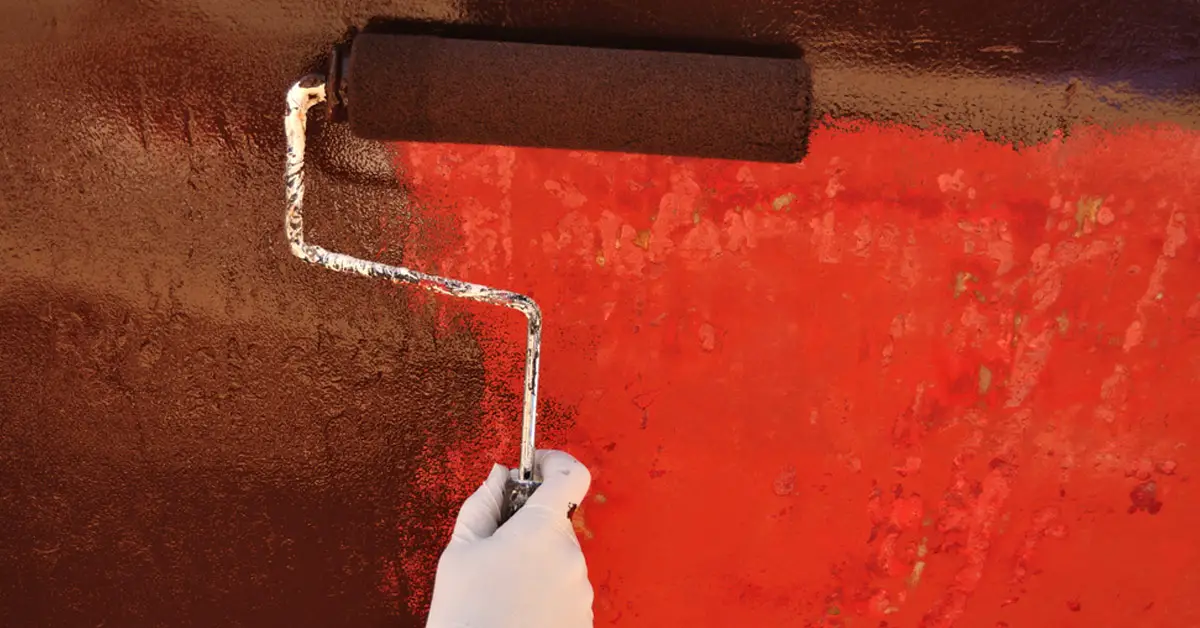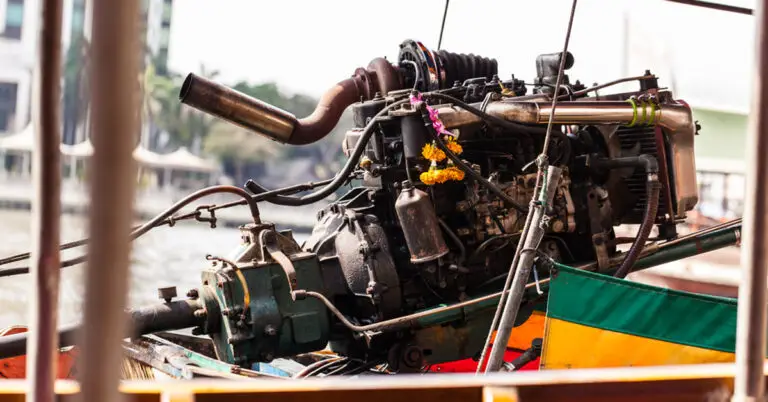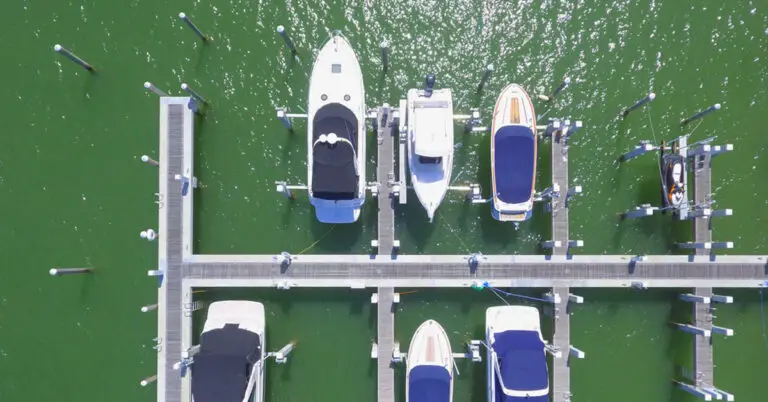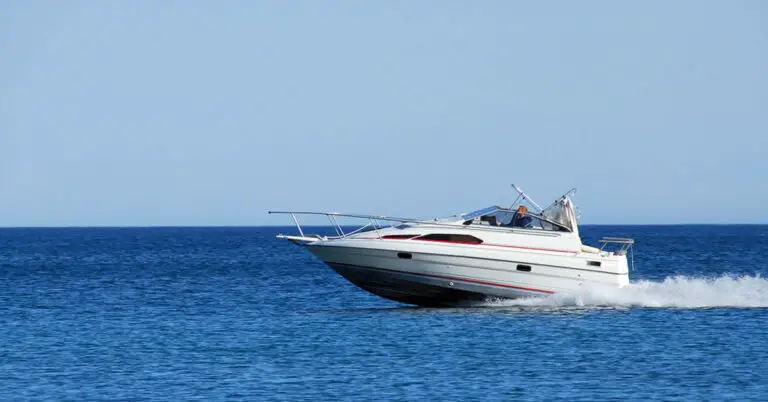Should I Paint the Bottom of My Aluminum Boat? Weighing the Pros and Cons
Navigating the waters of boat maintenance can often feel like steering through a sea of countless decisions. One such decision that many boat owners grapple with is related to a seemingly insignificant area of their vessels – the underside.
Yes, painting the bottom of your aluminum boat is generally a good idea. It can protect against corrosion and the growth of marine organisms, enhance performance, and potentially increase your boat’s lifespan. Always use marine-grade paint suitable for aluminum.
This choice takes on added weight for aluminum boat owners, often dividing opinion and stirring up lively debates. It’s a question that, on the surface, may seem simple yet delves into the heart of aesthetics, performance, and longevity.
To Paint or Not to Paint: The Central Question

To paint or not to paint is the question every aluminum boat owner inevitably faces. It’s a decision that extends beyond mere aesthetics, crucial to the vessel’s performance, durability, and maintenance needs. The choice involves considering various factors, from the boat’s primary use and storage conditions to the owner’s budget and commitment to upkeep.
To Paint:
Protection Against Corrosion: Aluminum, while rust-resistant, is prone to corrosion in saltwater environments. A good coat of marine-grade paint can offer an added layer of defense.
Prevention of Marine Growth: A painted bottom can prevent the accumulation of barnacles, algae, and other marine organisms that can affect the boat’s speed and fuel efficiency.
Improved Performance: Some types of bottom paint can reduce friction, enhancing the boat’s speed and maneuverability in the water.
Not to Paint:
Added Maintenance: Painted bottoms require periodic touch-ups and can chip or peel over time, requiring additional effort and expenses.
Risk of Incompatible Paints: Using the wrong paint or primer can lead to blistering, peeling, and even damage to the aluminum.
Natural Resistance: Unpainted aluminum has a natural oxide layer that provides some protection against corrosion, which may suffice for boats used primarily in freshwater.
Pros of Painting the Bottom of Your Aluminum Boat
Painting the bottom of your aluminum boat can yield several benefits that enhance your boating experience while extending the lifespan of your vessel.
- Corrosion Protection: Aluminum boats are susceptible to corrosion, especially in saltwater environments. Quality marine-grade paint can create a barrier, protecting the hull from corrosive elements and reducing the risk of pitting.
- Prevention of Marine Growth: Barnacles, algae, and other marine organisms can attach themselves to the bottom of your boat, slowing it down and reducing fuel efficiency. Anti-fouling paint can prevent this buildup, keeping your boat’s performance at its peak.
- Improved Performance: Certain types of marine paint can reduce friction between the boat and water. This reduction can increase speed and improve maneuverability, leading to a smoother ride and potentially lower fuel costs.
- Enhanced Aesthetics: A well-painted boat can enhance your vessel’s appearance. It allows for various color choices, and a shiny, well-maintained bottom can give your boat a professional, cared-for look.
- Potential Increase in Resale Value: A boat with a well-painted and maintained hull can appeal more to potential buyers. It indicates that the boat has been well cared for, which can increase its resale value.
Cons of Painting the Bottom of Your Aluminum Boat
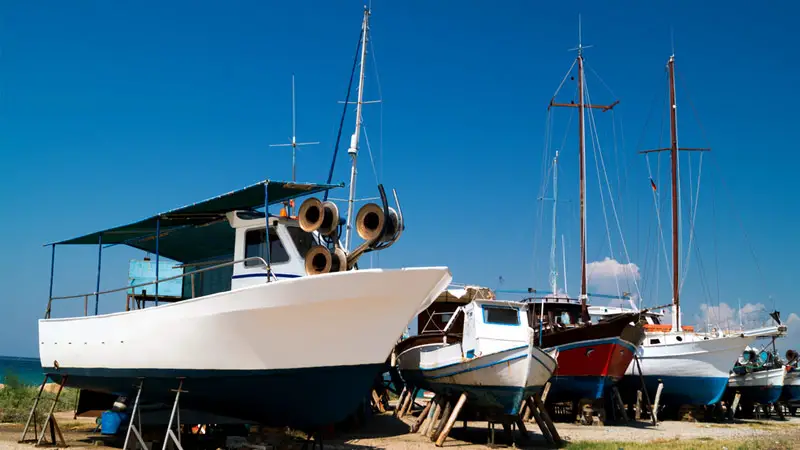
While painting the bottom of your aluminum boat presents several benefits, it’s also essential to recognize the potential drawbacks. The decision to paint should not be made lightly, as it implies a commitment to ongoing maintenance and care. Furthermore, the process can be time-consuming and, if not done correctly, can lead to undesired consequences.
- Regular Maintenance: A painted boat bottom requires ongoing upkeep. Over time, paint can chip or peel, necessitating touch-ups or a complete repaint. This maintenance can be time-consuming and adds to the boat’s overall cost of ownership.
- Potential for Damage: If the wrong type of paint or primer is used, it can cause blistering and peeling, potentially damaging the aluminum itself. This risk underscores the importance of selecting the right products for your boat.
- Increased Costs: Quality marine-grade paint, primer, and other necessary supplies can be expensive. Furthermore, if you hire professionals for the job, the labor costs can add up quickly.
- Natural Resistance: Aluminum forms a protective oxide layer when exposed to the elements. In many cases, this natural defense may be sufficient for boats primarily used in freshwater, making the added paint protection unnecessary.
- Environmental Considerations: Some anti-fouling paints contain heavy metals or biocides that can harm marine life. Using these paints may conflict with environmental considerations and is banned in some areas.
Types of Paint Suitable for Aluminum Boats
Choosing the right paint for your aluminum boat is crucial. Not all paints are created equal, and using the wrong type can lead to problems down the line, such as blistering, peeling, or even damage to the boat’s hull. Therefore, understanding which paints are suitable for aluminum boats is a crucial step in the process.
Aluminum boats require a specific type of paint known as marine-grade paint. These paints are specially formulated to withstand harsh marine conditions and are designed to adhere well to aluminum surfaces. They come in various types, each offering unique properties and benefits.
- Alkyd Enamel Paint: This paint is relatively easy to apply and dries to a hard, glossy finish. It offers good resistance to saltwater and weather conditions, making it suitable for boats used in marine environments.
- Two-Part Polyurethane Paint: Known for its durability and high-gloss finish, two-part polyurethane paint provides excellent protection against UV rays and harsh weather. However, it’s more challenging to apply and requires precise mixing.
- Epoxy Paint: Epoxy paint forms a thick, hard coating that protects against corrosion and abrasion. It adheres exceptionally well to aluminum surfaces but can be challenging due to its quick drying time.
- Anti-Fouling Paint: This paint is specifically designed to prevent the growth of marine organisms on the boat’s hull. It’s ideal for boats that remain in the water for extended periods, but some types may contain harmful biocides, so choosing environmentally friendly options is essential.
- Primer: Before any paint is applied, a quality primer suitable for aluminum should be used. Primers prepare the surface, ensuring better paint adhesion and providing additional protection against corrosion.
Painting Process: Steps to Coat Your Boat’s Underbelly
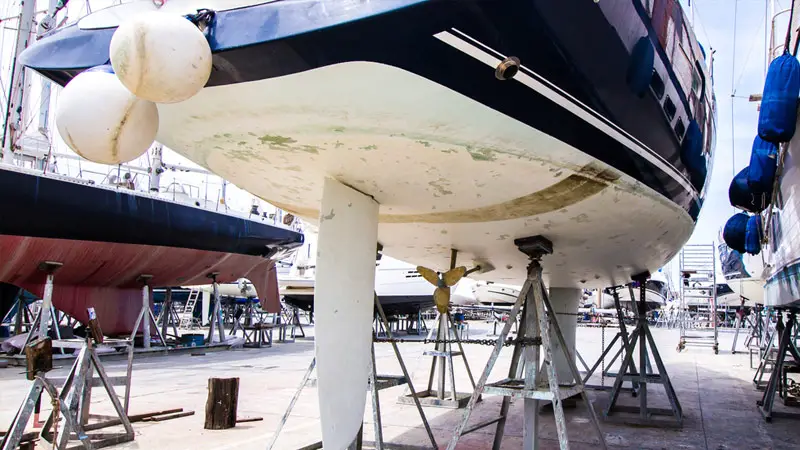
Painting the bottom of an aluminum boat is a meticulous task that requires preparation, patience, and attention to detail. While it can be a DIY project for those willing to invest the time and effort, it’s crucial to follow each step carefully to achieve a durable and effective finish. A well-executed paint job can enhance the boat’s aesthetics, longevity, and performance.
Understanding the process can help you decide whether to undertake this task or hire professionals. If you opt for the former, knowing the steps involved will equip you with the necessary knowledge to complete the job successfully. The painting process generally involves preparation, priming, and painting, each with specific steps to follow.
1. Preparation:
- Clean the Boat: Clean the boat’s bottom thoroughly to remove dirt, algae, or barnacles. Use a pressure washer or a scrub brush for this task.
- Sand the Surface: Once clean, sand the surface to remove any oxidation and create a rough texture for better paint adhesion. Use medium-grit sandpaper for this.
- Wipe Down: After sanding, wipe down the surface with a solvent like denatured alcohol to remove dust or grease.
2. Priming:
- Apply Primer: Apply a thin coat of a corrosion-resistant, marine-grade primer suitable for aluminum. Allow it to dry according to the manufacturer’s instructions.
- Light Sanding: Once the primer is dry, lightly sand the surface with fine-grit sandpaper to ensure a smooth finish.
3. Painting:
- Apply Paint: Apply your chosen marine-grade paint using a brush or roller. Applying multiple thin coats rather than one thick one is best, allowing each coat to dry fully before applying the next.
- Final Inspection: After the final coat, inspect the surface for any missed spots or imperfections, touching up as necessary. Allow the paint to cure completely before launching the boat.
Remember, safety should always be a priority when undertaking such tasks. Always use appropriate personal protective equipment, including gloves, safety glasses, and respirators if necessary.
Making the Decision: Factors to Consider

The decision to paint the bottom of your aluminum boat should be carefully considered. It’s a commitment that goes beyond the initial application and extends into regular maintenance, both of which can significantly impact the longevity and performance of your vessel. When weighing the pros and cons, several factors should be considered.
Firstly, consider the conditions in which you’ll be using your boat. If your boat is primarily used in saltwater, painting the bottom may be a beneficial measure due to the increased risk of corrosion from the salt. Similarly, if your boat stays in the water for extended periods, anti-fouling paint can prevent the growth of marine organisms. However, if your boat is used mostly in freshwater and is stored out of the water when not in use, the natural protective oxide layer of the aluminum may provide sufficient protection.
Secondly, consider your willingness and ability to commit to the necessary upkeep that a painted bottom requires. Remember that paint can chip or peel over time and may need touch-ups or a complete repaint. Consider whether you have the time, resources, and skills to properly maintain the paint job. Also, factor in the cost of the initial paint job and the ongoing maintenance. If the expenses seem too high, it might be more beneficial to leave the boat unpainted and invest in regular professional cleanings instead.
Finally, consider the environmental impact. Some types of anti-fouling paint contain biocides or heavy metals that can harm marine life. To minimize environmental impact, you must carefully research and select an effective and environmentally friendly paint. Certain types of paint may even be regulated or banned in some areas, so it’s essential to be aware of any local restrictions. Your decision should balance your boat’s needs with your values and the requirements of the environment in which you’ll be boating.
Expert Opinions: What Professionals Say
When it comes to maintaining an aluminum boat, professionals in the boating industry often provide a wealth of knowledge and experience. The general consensus among these experts is that painting an aluminum boat’s bottom can be beneficial, especially for vessels frequently used in saltwater environments or left in the water for extended periods.
Marine Surveyors often advocate using marine-grade paint on aluminum boats, citing its protective qualities against corrosion and marine growth. They emphasize the importance of proper preparation and application to ensure the paint adheres well and offers maximum protection.
Boat Builders and Manufacturers typically agree on the benefits of painting. They advise using high-quality, marine-grade paint specifically designed for aluminum surfaces. Many manufacturers even deliver new boats with painted bottoms to provide immediate protection.
Marine Biologists focus on the environmental aspect. While acknowledging the practical benefits of anti-fouling paints, they advise against paints containing harmful biocides or heavy metals. Instead, they recommend eco-friendly alternatives that deter marine growth without harming the ecosystem.
Professional Painters and Boat Maintenance Providers stress the importance of proper application and maintenance. They note that poorly executed paint can do more harm than good, leading to peeling, blistering, or even damaging aluminum.
While these expert opinions provide valuable insights, remember that each boat and its usage are unique. It’s always a good idea to consult with a local marine professional who understands the specific conditions your boat will face. They can provide personalized advice to help you make the best decision for your situation.

